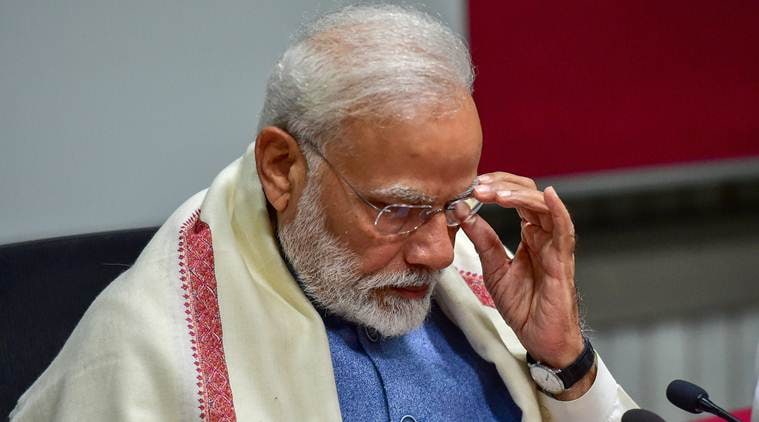
The Interim Budget of 2019 is a desperate attempt by a government whose tenure ends in mid May, to assuage the anger and disappointment of the people who feel betrayed. Prime Minister Narendra Modi had sold dreams of two crore jobs a year to the youth and promised to double incomes of farmers. Five years later, and having failed to deliver, this budget is a ruse to deflect the focus from real issues. It is an attempt to confuse people with new promises, without giving an account of what was promised in the previous budgets of this government.
At the outset, it is important to place on record the constitutional provisions, parliamentary practice and established precedents on the presentation of budget and the passage of the Finance Bill. The Lok Sabha is elected for a term of five years unless dissolved earlier and the government’s tenure in office is limited accordingly to five years. The exception being only if the government loses its majority and the confidence of the House before that.
The present BJP government has presented five full budgets and, therefore, has no mandate to present a budget for the next financial year 2019-20. Article 112 of the Constitution makes it abundantly clear that the budget is an annual financial statement containing the receipts and expenditure for the next financial year. What Parliament can pass will be a vote on account, sanctioning expenditure for the three months beginning April 1, 2019 upto June 30. By then, a new government would have assumed office and presented a regular budget.
How, then, can one describe the interim budget document of today? This is an exercise in populism, merely a statement of wishes and political propaganda. This will become infructuous and irrelevant when a regular budget is presented in June.
Today’s document also conveys confused thinking, bad economics and takes people for granted. It has no ring of sincerity and is a fictional account of the government’s achievements in five years, which are contradicted by facts and reality. Let us look at what is promised to our people. Farmers will be given Rs 6,000 in a year as income support, which translates to Rs 17 a day. India is confronted with acute agrarian distress and a large number of indebted farmers have committed suicide in recent years. If the government was sensitive to farmers’ plight, why did it wait for four years and nine months to announce this measure? It is too little and too late.
The claim on MSP at one-and-a-half times the cost of production too is false and denies the market reality; farmers are forced to sell well below the MSP. The exports of farm produce, which were booming in 2014, have also crashed. Prime Minister Modi needs to be reminded that his government has not made India self-sufficient in food production; it was achieved by the “Green Revolution”, which was launched when Indira Gandhi was the prime minister.
The claim on social security for 10 crore workers in the unorganised sector is fallacious and boastful. In 2014, the “Atal Pension Yojana” was announced for five years assuring monthly income from Rs 1,000 to Rs 5,000, with the government contributing 50 per cent of the annual premium. What is now proposed is a marginal increase in government’s contribution. The question arises if Rs 3,000 can provide adequate social security for a 60-year-old worker? It is well below minimum guaranteed wages and not enough for sustenance.
The budget has paid only lip service to the creation of jobs and is brazen in its denial of the unemployment crisis — unemployment stands at 6.1 per cent, the highest since 1971. India is not creating jobs despite the boastful claims of the government. Tens of millions of jobs have been destroyed by demonetisation and the hasty imposition of a flawed GST. CMIE’s latest report informs that in 2018, 1.10 crore (11 million) jobs were lost. Mudra loans are not a panacea as the loan average to the beneficiaries comes to a mere Rs 23,000. Acting finance minister Piyush Goyal’s words — “jobs seekers have become job creators” — is an insult to the unemployed youth.
The interim budget promises to create a lakh digital villages by 2024. Remember, in 2015, the government had promised broadband connectivity in 2.5 lakh villages by 2016, which was then pushed to 2017 by minister Ravi Shankar Prasad. Now in 2019, there is complete silence on the topic.
The BJP government’s propaganda machine works overtime. It has mastered the art of fudging data and inflating numbers denting the very credibility of India’s national data. Investments and industrial production have fallen sharply, credit offtake to the industry is at a record low, merchandise exports have declined since this government assumed office and may not even reach where they stood in May 2014. We are not creating jobs or establishing new factories: “Make in India” is just a slogan.
Ironically, the government has now announced a Mission 2030 assuming it will remain in office until then, and of making India a $3-trillion economy. To achieve this, the Indian economy will have to grow at 10.5 per cent for 10 continuous years.
What is promised to the farmers and workers cannot be operationalised in 45 days beginning April 1, when India will be in the midst of elections. Prime Minister Modi has a penchant for catchphrases: Stand up India, Start up India, Skill India, Khelo India, Make in India and Digital India. The economy is on a treadmill and the government is busy talking, advertising and making boastful claims.
The writer is the deputy leader of the Congress in the Rajya Sabha and a former Union minister of commerce and industry